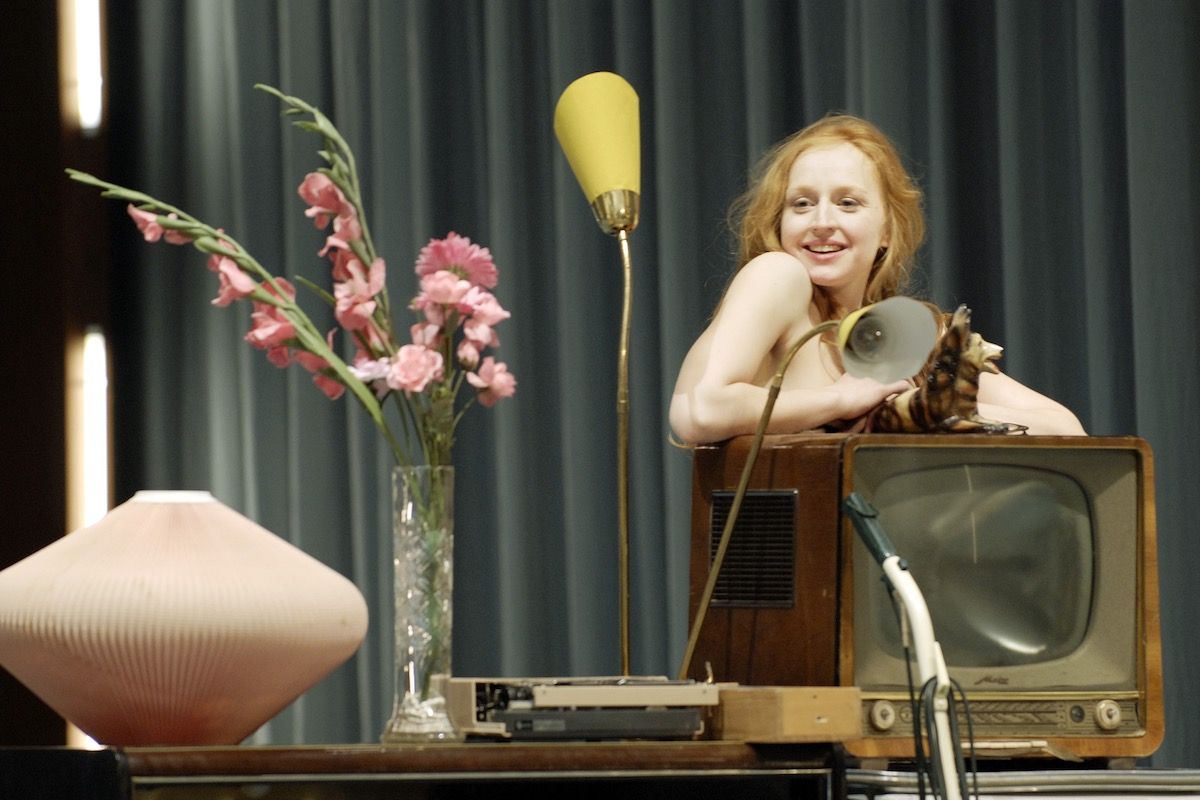
As I walked towards the theatre to see Thomas Ostermeier's adaptation of Die Ehe der Maria Braun (The Marriage of Maria Braun), I wondered why I had actually decided to go and see it. I saw the film many years ago. So why attend a stage adaptation? I'm glad I went to see it, although I still haven't got an answer to the existential question why I did so.
Thomas Ostermeier's adaptation follows the basic storyline of the original Fassbinder script. Briefly, it tells the story of Maria Braun, a German girl, who in the middle of the Second World War marries her love Hermann. The next day Hermann is sent to the front and after the war has ended is presumed dead, although Maria keeps believing in his return. She goes to work in a bar frequented by American soldiers where she befriends a soldier named Bill who supplies her with scarce commodities. Then one day, just when they are about to make love, Hermann returns home. A fight ensues between the two men during which Maria kills Bill. Hermann takes the blame for the murder and is sent to jail. Maria finds a job as the personal assistant of a rich industrialist, Oswald, and agrees to become his mistress.
One of the key scenes in the script is when she tells her husband of her affair. She refers to herself as the Mata Hari of the Wirtschaftswunder, the economic miracle of Germany's rapid reconstruction and development after the end of the war. She adds that these are bad times for feelings.
Oswald finds out about her marriage to Hermann and unbeknownst to Maria visits him in prison. He offers to make him and Maria his sole heirs provided that he stays away from Maria after his release from prison.
After Oswald's death Hermann returns and Maria learns of the secret agreement between both men. For years she had worked hard to acquire wealth eventually becoming the first person in her family to own a house. For years she had played the game according to her own rules only to find out that all those years she had been the subject of a contractual agreement between the two men in her life, thus reducing her to a commodity. She dies in a gas explosion when she lights a cigarette in her kitchen.
Did she commit suicide or was it an accident? That is an open question. Symbolically her death marks the fact that her life ends the moment her desire turns into reality. This is why she HAD to die.
In Thomas Ostermeier's adaptation, while a radio reporter announces Germany's victory at the 1954 World Cup, she lights a lighter which then consumes her dress, leaving a black hole at the inside. With the victory of the German soccer squad and the death of Maria the patriarchal order is re-established. Even more than the movie Ostermeier's stage adaptation brings out the importance of women in Germany's reconstruction.
The entire performance was so smooth and natural that it was over before I realized it. It proved once more that Thomas Ostermeier is one of today's most interesting theatre directors. He knows all the tricks of postmodern and post-dramatic theatre, but puts them at the service of drama. In one scene one of the actors creates some smoke with a portable smoke machine to create the illusion of a train departing. Nothing is hidden, everything happens in full view and yet it works on a symbolical level. The same chairs can become a living room, a restaurant and a train compartment. Except for the actress who plays Maria Braun, the actors fluidly change roles and gender.
As is now almost standard in contemporary theatre Ostermeier makes extensive use of both live and recorded video. The stage design has a distinct 50s look. Unlike many productions that desperately try to be contemporary by incorporating references to current affairs it is decidedly untimely. But because of that it is all the more contemporary, because it is an open invitation to contemplate how it relates to the present. It creates a distance, which makes it feel close.
Links
My review of Hamlet by Thomas Ostermeier and the Schaubuehne Berlin.